In the spellbinding world of 'Demon Slayer,' Akaza stands as a figure both enigmatic and tragic.
Known as the Upper Moon Three demon, his character is a juxtaposition of brute strength and a tumultuous past, making him one of the most compelling antagonists in the series.
This article offers an in-depth analysis of Akaza, exploring his complex backstory, his unique fighting style, and his impact on the overarching narrative of 'Demon Slayer.'
Through this exploration, we seek to understand the man behind the demon and the intricate layers that define his character.
Contents
Introduction to Akaza: The Upper Moon Three
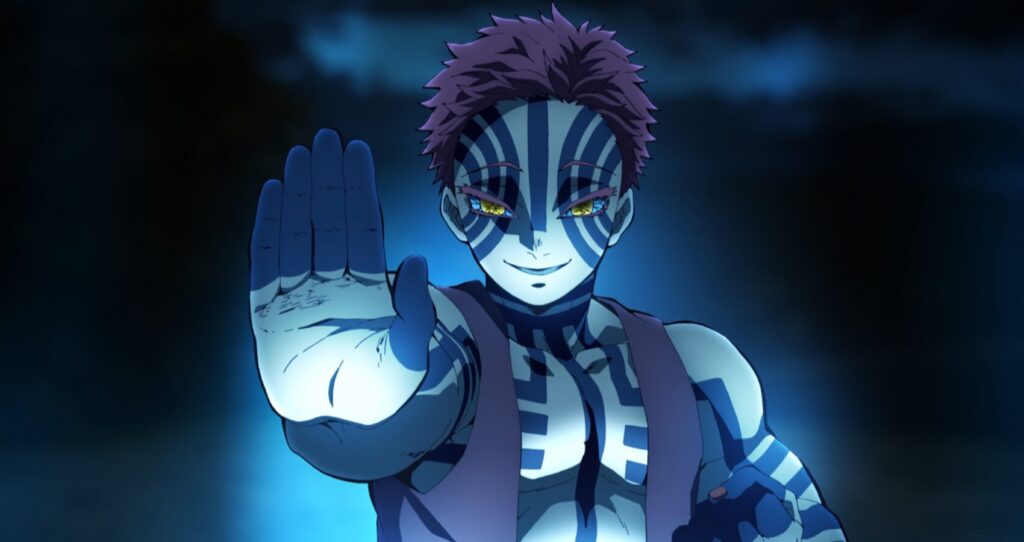
Akaza is a demon belonging to the "Twelve Kizuki - Upper Moon Demons," the direct subordinates of Muzan Kibutsuji, the leader of the demons.
He holds the rank of "Upper Moon Three," essentially serving as an executive member of the enemy organization.
He is the first of the Upper Moon demons to appear in the story, establishing the formidable strength of the Upper Moons to the protagonist Tanjiro Kamado, as well as to the readers.
Additionally, he is the only enemy character, apart from Muzan, who is set up for a rematch with the protagonists across multiple chapters, making him a unique and recurring nemesis for the main characters, and could be considered the protagonist's 'fated enemy' aside from Muzan.
Character Profile, Appearance and Personality
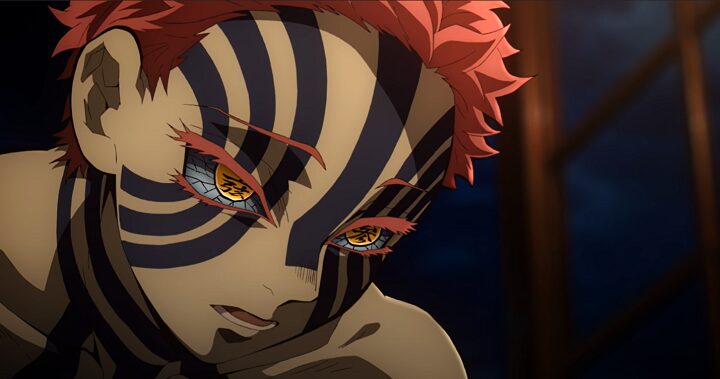
Akaza stands at 173cm tall and weighs 74kg.
He has short hair and is clad in simple, monk-like attire, with straight line patterns running across his body like tattoos.
His eyes are constantly bloodshot and cracked, with his pupils shining golden.
In colored illustrations, the contrast between his red hair and pale blue skin is striking.
Akaza prefers to battle opponents he deems strong and shows an unusual disdain for those he considers weak.
He relentlessly pursues the "supreme realm," imposing infinite training upon himself.
Consequently, he encourages humans he recognizes as strong to become demons, wishing to continue battling them eternally.
This character design portrays him as a sort of battle maniac.
He is very favorable towards humans he recognizes as strong, constantly praising their techniques during combat and often fighting with a smile.
On the other hand, he openly shows hostility towards the higher-ranked Upper Moons like the First and the Second, and he holds no respect for Muzan Kibutsuji, viewing him merely as "one who gives orders."
However, these traits are seen as virtues, such as having high aspirations and being loyal to orders, earning him high regard from other upper-ranked demons.
Akaza's combat Abilities
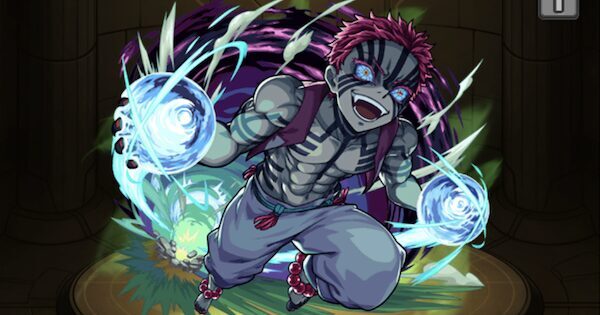
Akaza is a master of unarmed martial arts, excelling in hand-to-hand combat using punches, hand chops, and kicks.
His physical abilities are extraordinarily high; he can clench his fist to make it hard enough to clash with the strikes of the highest-ranking swordsmen, the Hashira, and each of his blows is lethal.
His most proficient technique is "Bell Splitting," where he breaks a downward-swinging sword with a side strike using his bare hands.
His body's regeneration speed is also abnormal, with severed parts instantly healing back to their original state.
This means that strategies like "creating an opening by impairing movement through loss of a body part" are ineffective against him, rendering almost all damage meaningless unless it involves decapitation, a demon's critical weakness.
Moreover, his Blood Demon Art: Destructive Kill significantly advantages him in close-quarters combat.
Although his techniques might seem less flashy and less unreasonable compared to other demons, due to the viability of sword-based close combat, his inherent abilities elevate these to an impregnable defense.
His habit of praising opponents during battle also implies he has the leeway to do so, indicating that he rarely exerts his full effort even against opponents he acknowledges as strong.
Akaza's Blood Demon Art: Destructive Kill (Hakai Satsu)
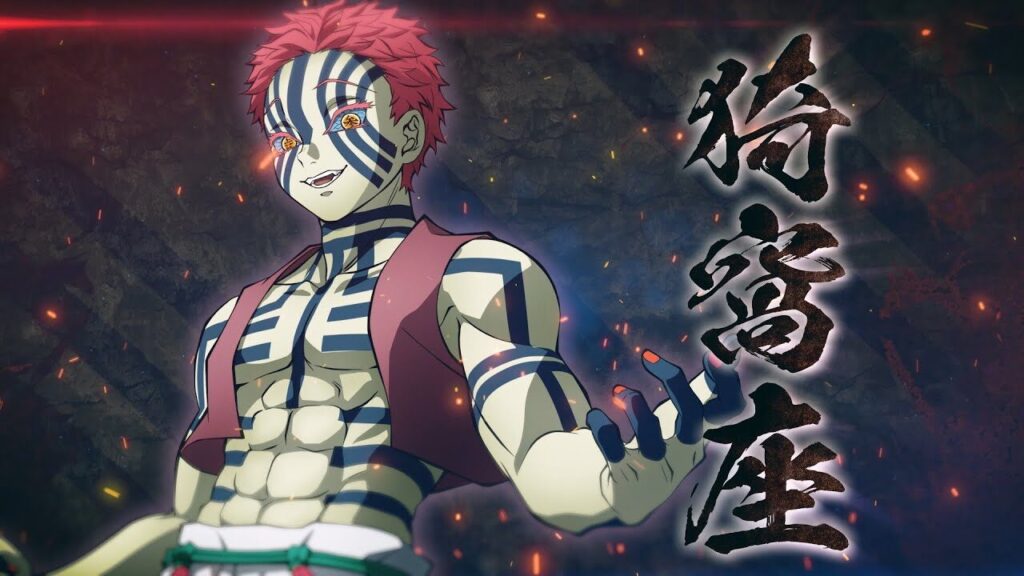
This technique, called "Destructive Kill: Compass (Rashin)," allows Akaza to sense something akin to "fighting spirit," similar to the human will to fight.
By detecting this fighting spirit, he can accurately discern the opponent's openings for attack and defense.
This skill involves deploying a pattern resembling snow crystals around himself to sense fighting spirit.
Although he can visually perceive fighting spirit without deploying the Compass, its deployment enables him to sense fighting spirits even outside his field of vision.
Additionally, he possesses multiple striking techniques under the name "Destructive Kill," such as "Destructive Kill: Air type (Kūshiki)" and "Destructive Kill: Leg Form, Crown Split (Kyakushiki: Kamurosakiwari)."
These techniques are accompanied by shockwaves (or similar effects) of the same color as the Compass.
Unlike the water or flames that accompany the swordsmen's techniques, these possess physical destructive power.
Besides simply enhancing the attack's power, these shockwaves also function as indirect attacks, extending beyond his reach.
Given these abilities, strategies like "hiding or maintaining distance to buy time until sunrise" against Akaza become counterproductive, as they only result in being one-sidedly detected and attacked.
As a result, swordsmen are forced into close combat, which is Akaza's forte.
Akaza's Background

In "Demon Slayer," many of the demons have tragic pasts, but Akaza's backstory stands out as particularly sorrowful and brutal, even among the tragic histories in the series.
The sheer severity of his past was so profound that, for a time, discussions about Akaza as a comical character completely ceased after his backstory was revealed, despite him being previously known and even liked for his more light-hearted portrayal.
Before his transformation into a demon known as Akaza in "Demon Slayer," he was Hakuji, a young man with a life marked by tragedy and hardship.
Hakuji's early life was burdened with the responsibility of caring for his ill father.
Driven by desperation to afford his father's medicine, Hakuji resorted to theft.
This life of crime, though motivated by love and desperation, ultimately led to a heartbreaking outcome when his father, ridden with guilt over Hakuji's actions, took his own life.

This loss plunged Hakuji into a deep despair, leaving him with a profound sense of loneliness and guilt.
In the midst of his suffering, Hakuji found a glimmer of hope and redemption when he was taken in by Keizo, a martial arts master, and his daughter, Koyuki.
Under Keizo's guidance, Hakuji learned a martial arts style known as "Soryu," laying the foundation for the formidable combat skills he would later exhibit as a demon.
During this time, he formed a deep bond with Koyuki, and the pair eventually became engaged, symbolizing a new beginning and a chance for Hakuji to lead a virtuous life.
However, this period of peace was short-lived.
Tragedy struck again when Keizo and Koyuki were poisoned and killed.
Overcome with grief and rage, Hakuji avenged their deaths, only to find himself bereft of purpose and direction in the aftermath.
It was at this lowest point in his life that Hakuji encountered Muzan Kibutsuji, the progenitor of all demons, who transformed him into a demon.
As a demon, Hakuji, now Akaza, lost most of his human memories, including those of his time with Keizo and Koyuki.
His new existence was marked by a relentless pursuit of strength and a penchant for battling strong opponents.
Ironically, despite his amnesia, vestiges of his past influenced various aspects of his demonic life.
His fighting techniques bore the influence of the Soryu style, and the names of his techniques were inspired by the fireworks he once enjoyed with Koyuki.
Even the patterns on his body and the shape of his Compass ability were reminiscent of his past life - a tragic blend of the tattoos he received as punishment for his theft and the demon's markings.
In summary, Akaza's past as Hakuji was a tale of love, loss, and unfulfilled redemption - a stark contrast to the ruthless demon he would become.
His transformation into Akaza marked the erasure of his tragic human life, leaving behind a demon driven by an insatiable desire for strength and combat.
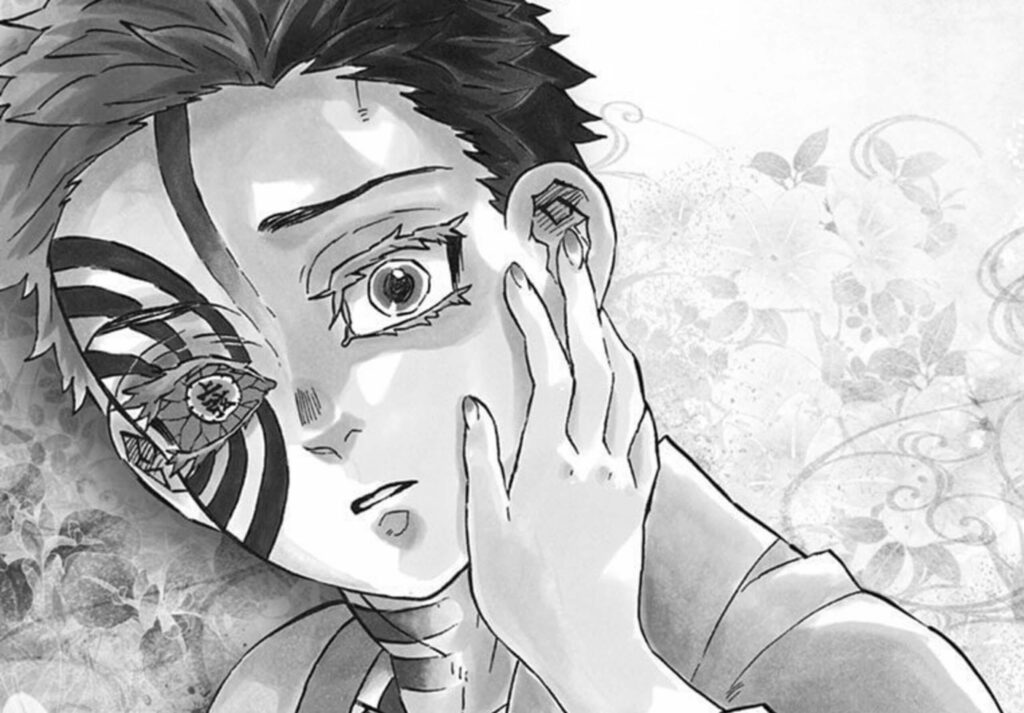
Stance and Techniques
Derived from "Soryu," a martial arts style taught by Keizo
The names of his techniques
Originating from the fireworks he watched with Koyuki
The shape of the Compass
Based on Koyuki's hair ornament
Body patterns
A blend and expansion of the tattoos engraved as punishment for his theft and the demon's patterns
In Conclusion
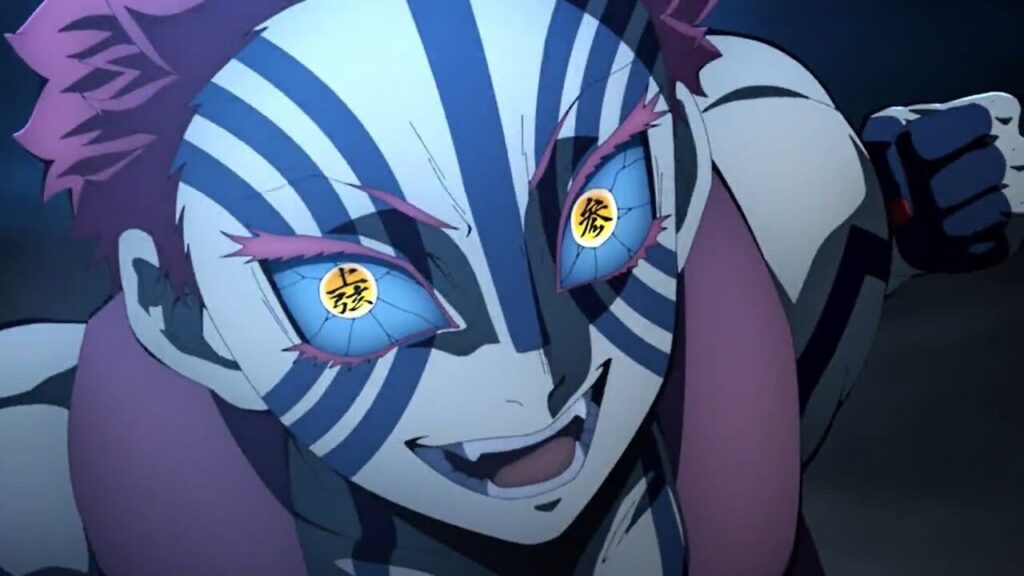
Akaza in "Demon Slayer":
An Overview of His Role and Position Among the Demons In the universe of "Demon Slayer," Akaza occupies a central role as one of the series' most formidable antagonists.
His position as the Upper Moon Three among the Twelve Kizuki underlines his importance both in the hierarchy of the demons and in the narrative of the series.
This article explores Akaza's role within "Demon Slayer," highlighting his position among the demons, his interactions with other characters, and the impact he has on the story.
Akaza's Position in the Demon Hierarchy:
Akaza holds the title of Upper Moon Three, making him one of the most powerful demons under Muzan Kibutsuji, the leader of the demons.
This position is a testament to his extraordinary strength and combat abilities, placing him above countless other demons in terms of power and influence.
His rank not only signifies his prowess but also his loyalty and importance to Muzan's objectives.
Akaza's Role in the Narrative:
Within the storyline of "Demon Slayer," Akaza serves as a significant antagonist, especially in his encounters with the main characters.
His battles are among the most intense and impactful in the series, showcasing the immense challenge that the Demon Slayer Corps faces against the upper echelons of the demon world.
Akaza's confrontations with characters such as Tanjiro and other key members of the Demon Slayer Corps are not only thrilling in terms of action but also rich in emotional and thematic depth.
Character Dynamics and Relationships:
Akaza's interactions with other characters in "Demon Slayer" reveal much about his personality and the world of the demons.
His relationship with Muzan Kibutsuji and the other Upper Moons highlights the complex dynamics within the demon ranks.
His disdain for weakness and his own principles about strength and combat offer a stark contrast to the values and motivations of the Demon Slayers, adding layers to the moral landscape of the series.
Impact on the Series:
Akaza's presence in "Demon Slayer" significantly influences the progression of the story and the development of the main characters.
His battles are turning points in the series, often resulting in significant emotional and narrative consequences.
The intensity and outcome of his fights bring key themes of the series to the forefront, such as the nature of strength, the cost of power, and the struggle between humanity and demonhood.
Akaza's Legacy in the Demon Slayer Universe:
Akaza's legacy in "Demon Slayer" is marked by his memorable battles, complex character, and the thematic weight he adds to the story.
As Upper Moon Three, his actions and fate resonate beyond his own character, affecting the entire course of the narrative and leaving an indelible mark on the world of "Demon Slayer."
In conclusion,
Akaza's role as the Upper Moon Three in "Demon Slayer" is multifaceted and integral to the series.
He embodies the strength and terror of the demon world while also adding depth and complexity to the narrative, making him a key figure in the epic tale of "Demon Slayer."
Thank you very much for reading my article to the end!



